The borderline strike call/non-call is the most emotionally charged call in a baseball game. It turns what could’ve been a salvageable 1-1 count into a 0-2 hole, it turns a possible big punch out into a bases loaded walk. The calls are (seemingly) 50/50, which drives the frustration for teams/players because if it seems the umpire is going against your team for no reason other than a personal grudge. In a world where we have the data to analyze this, the question I ask; IS there is a measurable bias, how often are these strike calls going againt a certain team/player? Is there a pattern, and are there players who have the right to say “He Hate Me” about the umpire?
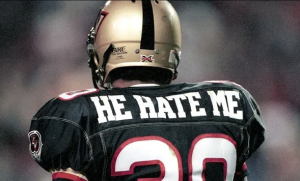
To analyze this, I pulled data for pitches that were thrown this season in what is called the “Shadow Zone” as defined by Statcast, which is the area about one-ball size both inside and outside the strikezone:
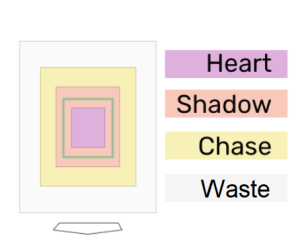
And to dig even further into contentious pitches, we are cutting the “Shadow Zone” in half, to only analyze pitches that were taken in what was technically the “Outside” of the strikezone. The area shaded in red is the zone of our interest (the green line is the boundary of the strikezone itself):
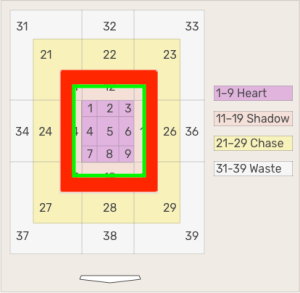
This is the exact area where a called ball would be a “good take” and a called strike would feel objectionable. Just to set a baseline for everyone, in 2025 there were ~72,000 pitches taken in the shaded zone between the US Opening Day and September 10th. Among those 72,000 pitches, 14% of these pitches are called a strike (remember by definition these pitches are NOT strikes).
Tallying the 72,000 taken balls/strikes by hitter, I compared the % of called strikes by hitter, and here are the highest % of called strikes for hitters this year (among those who took +100 pitches in the shaded zone):
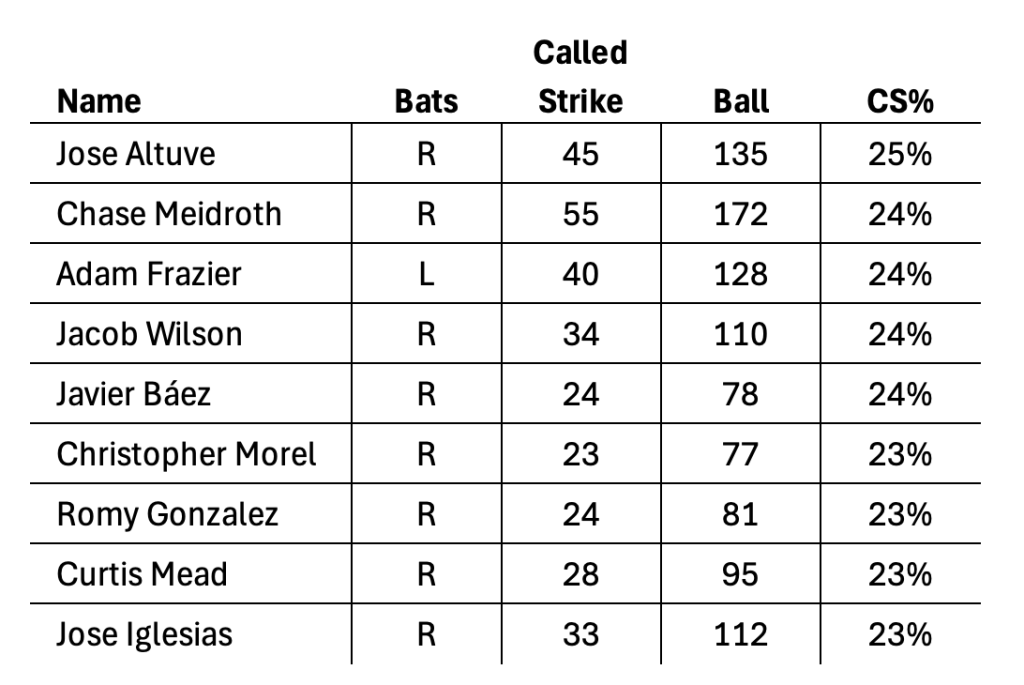
So there you have it, the most hated players by umpires is Jose Altuve! ……
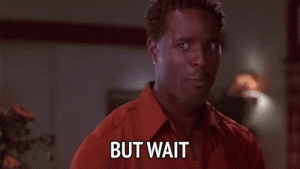
Here are the lowest percentage of called strike among hitters (the “He Love Me” list):
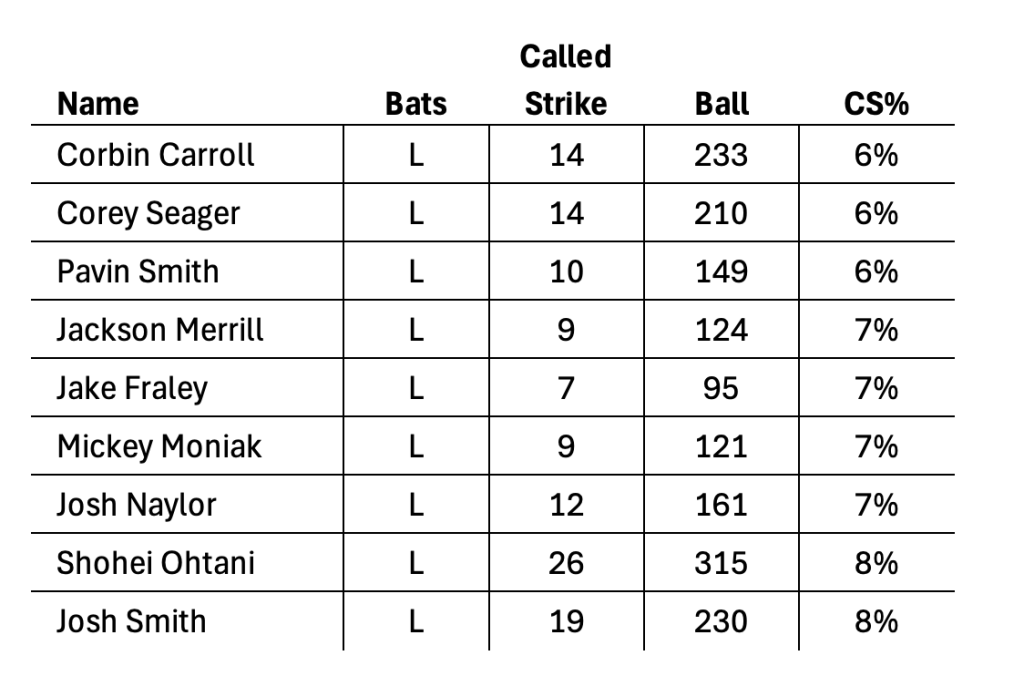
Notice that almost every “Hated” hitter (other than Adam Frazier) batted right handed, and almost every “Loved” hitter bats left handed. This is the first unconscious bias I noticed of umpires (which I’ll call “Ump-conscious Bias”).
Umpconscious Bias #1: Lefties Get the Benefit of the Doubt
I’m not sure what the explanation is, but there is a really big platoon split when it comes to whether these borderline balls get called strikes:
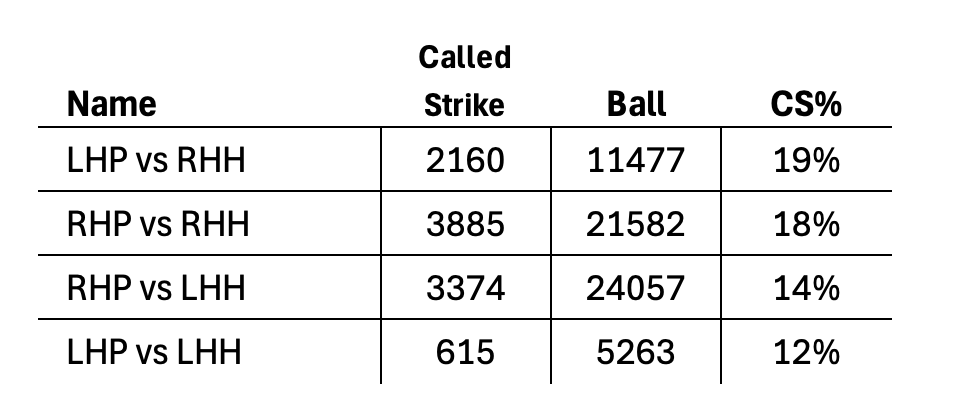
Just to compare, here are 3 strikes called against right handed hitters (the most “hated”) and 3 balls taken by left handed hitters (among those most “loved”):
Right Handed Hitters Left Handed Hitters
One thing I never noticed until writing this article is the umpire sets up towards the hitter, so when there’s a right handed hitter the umpire leans to his left, when there’s a left handed hitter, the umpire leans to his right:
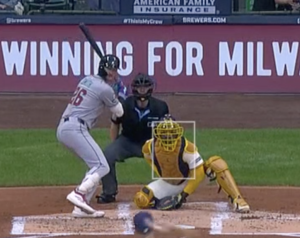
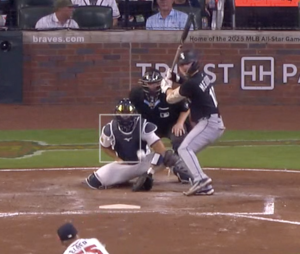
So depending on which handed hitter is up the umpire is getting a pretty different view of home plate.
What’s even more interesting about this phenomenon is there are umpires with massive platoon splits. Hunter Wendelstedt has called 38% of borderline balls as strikes against righties (remember the league average is 14%), against lefties he has called 7% strikes! Ron Kulpa is the next largest difference, who calls 26% against righties and only 14% against lefties.
Umpconscious Bias #2: Zone Opens Up Late in Games
It’s not a large difference (unlike Hunter Wendelstedt’s anti-righty crusage), but there is a trend of borderline balls being called strikes the later the game goes:
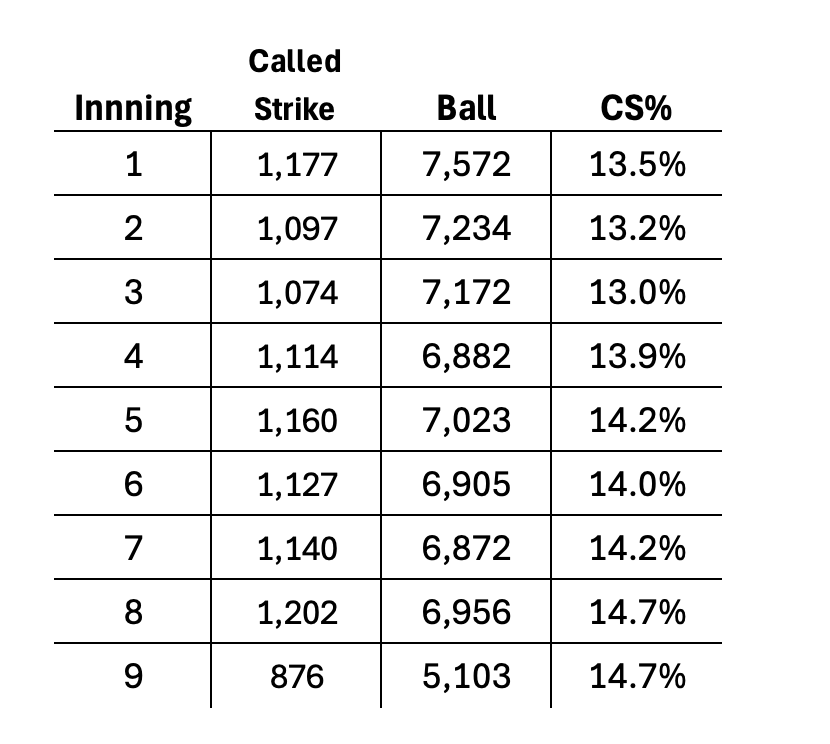
This could more from situations where a team has a large team late, and the umpire goes into “let’s get this game over with” mode.
Site Note: Umpconscious Non-Bias: Home Team vs Road Team
Just taking a moment to mention that if you thought “well the umpire probably makes favorable calls for the home teams because of the pressure of the crowd”, the split of home team vs road team was almost perfectly equal:

So if you thought heckling blue was getting your hitters borderline calls for your players, there is some bad news for you.
Umpconscious Bias #3: Solidarity Among Generations
Seeing the large platoon split among umpires, I started examining batter vs umpire data to see if there are any patterns of types of hitters that seem to get favorable calls from certain umpires. Full confession, I initially went into this expecting to see some sort of racial bias where maybe there’s an umpire that calls an unusually high percentage of borderline strikes against black/latino players (since the greater majority of MLB umpires are white males). Instead, what I found was patterns where “younger” umpires were more likely to favor “younger” players with less experience, and on the opposite end, veteran umpires were more likely to cut some slack to veteran players. Take Ron Kulpa, for example. A veteran who has umpired at the Major League level since 1999 and handled multiple postseason series. Here are the players who have had the most borderline balls/strikes called against them:
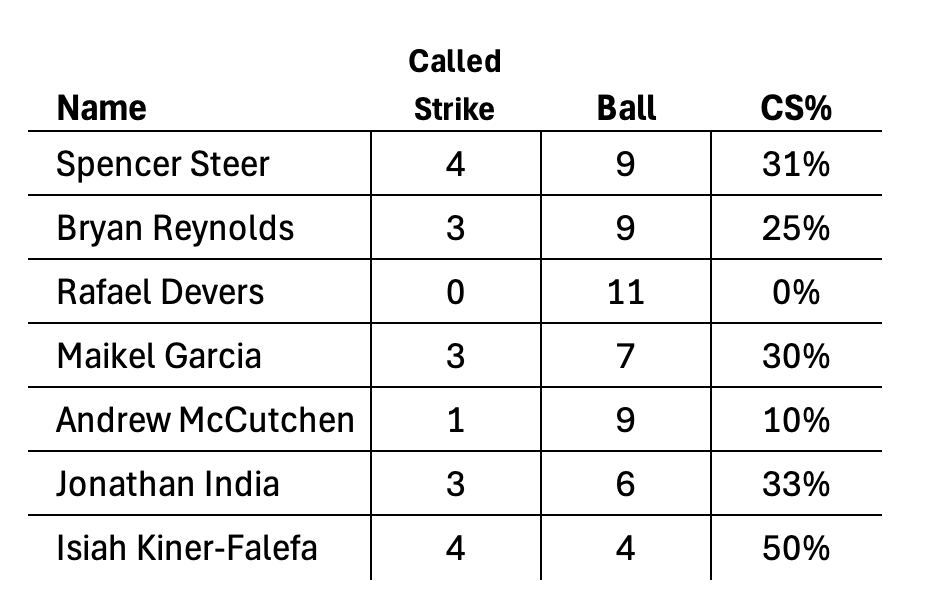
Notice he has only called 1 of combined 21 pitches against veterans Rafael Devers and Andrew McCutchen. Is there a generational solidarity that occurs among players and umpires, where young umpires understand what it’s like to be a young player trying to break into the big leagues? We can’t say for sure, but there certainly was a pattern observed.
Umpconscious Bias #4: So Who Do They Hate?
Now that we know umpires have their own tendencies, and that there’s a big platoon split, we can adjust hitters called strike percentage to see which players really have a gripe with the ball-strike calling this season. This method was taking every event *at a pitch level* and examining what a player’s “expected called-strike rate” was against their actual called strike rate. If there was going to be a true “He Hate Me” index, it would be these players below:
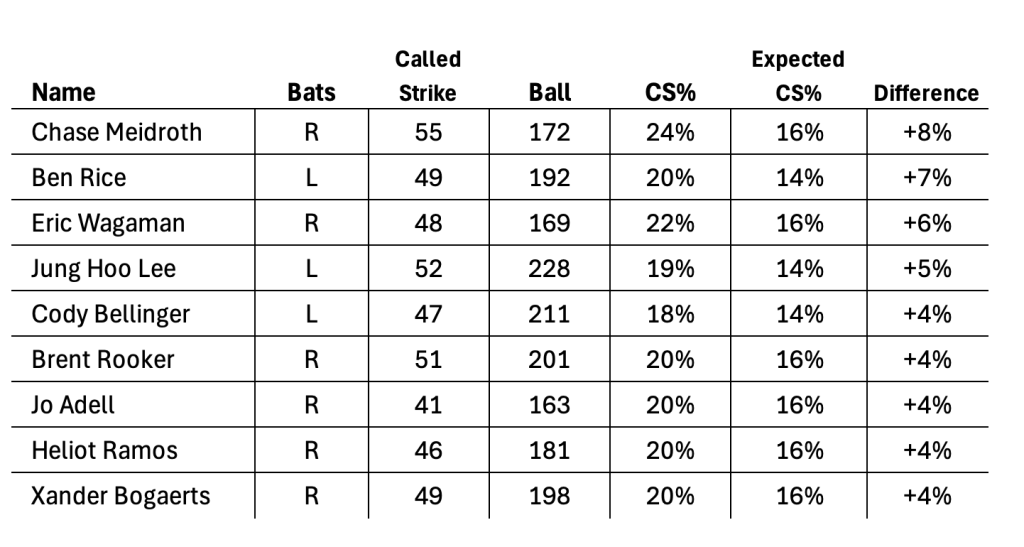
At a team level, there are three teams that greatly overperformed their expected called strike percentage (based on platoon, umpire, etc.) that could be called the “He Hate Us” teams:
- New York Yankees
- Toronto Blue Jays
- San Francisco Giants


